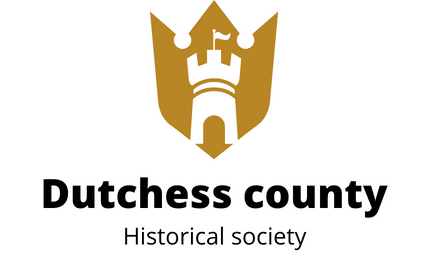How to Approach Mixed-Use Development Planning to Promote Work-Life Balance?

The quest for a work-life balance has been a prominent discussion in modern society. Employers and employees alike are beginning to understand the importance of balancing professional commitments with personal endeavors. This shift in consciousness has made its way into the realm of urban planning, where mixed-use developments are gaining traction as a solution for promoting a better work-life balance.
Mixed-use developments merge residential, commercial, and sometimes even industrial spaces into one central location. This fusion of varied spaces aims to reduce commute time, enhance community feel, and promote an integrated approach to living and working. In a world where time is an invaluable commodity, these developments are a boon to those juggling demanding careers and fulfilling personal lives.
This might interest you : What Are the Long-Term Financial Benefits of Investing in Energy-Efficient Buildings?
Understanding the Concept of Mixed-Use Developments
Before diving into how mixed-use developments can assist in promoting work-life balance, it’s crucial to comprehend the concept in its entirety. At its core, mixed-use development is a type of urban development strategy that blends residential, commercial, cultural, institutional, or entertainment uses, where those functions are physically and functionally integrated and provide pedestrian connections.
Mixed-use developments can be seen as a reaction against the single-use developments of the mid-20th century, where work, home, and leisure were segregated into different zones. This segregation often resulted in long commute times, leading to less leisure time and increased stress, which negatively impacted the work-life balance of many people.
Topic to read : How Can Real Estate Agents Use Social Media to Improve Property Sales?
Promoting Work-Life Balance Through Mixed-Use Developments
Work-life balance is a concept that involves properly prioritizing between work (career and ambition) and lifestyle (health, pleasure, leisure, family, and spiritual development). The rise of mixed-use developments addresses the struggle of balancing these aspects of life in several ways.
Firstly, these developments can significantly reduce commute times. By integrating workspaces into the same area as residential spaces, employees could potentially walk or cycle to work, thereby cutting down on hours spent in traffic.
Secondly, mixed-use developments can help employees disconnect from work. By having entertainment and leisure spaces within the same vicinity, it’s easier for employees to transition from the office to personal time.
Finally, this development model also encourages a sense of community. Considering the mixed demographic of residents and workers, it opens the door for more social interactions, an essential factor in maintaining mental well-being and a balanced life.
Implementing Effective Mixed-Use Development Planning
Effective planning plays a crucial role in creating mixed-use developments that promote work-life balance. Planning should be focused on integrating various spaces seamlessly and ensuring easy accessibility to all amenities and facilities.
One of the key factors to consider during planning is the allocation of spaces. Workspaces should be designed to promote productivity, while residential areas should provide tranquility and comfort. Additionally, the incorporation of green spaces is vital. These spaces can act as a bridge between work and home, offering a space for relaxation and rejuvenation.
The Role of Managers in Promoting Work-Life Balance within Mixed-Use Developments
While mixed-use developments provide a physical environment that promotes work-life balance, the responsibility doesn’t solely rest on the shoulders of urban planners. Managers and team leaders within these spaces also have a significant role to play.
Managers should encourage employees to take advantage of the proximity of residential and leisure spaces. This could mean promoting flexible working hours, encouraging breaks, and creating a company culture that values work-life balance.
Furthermore, managers have the power to shape the office environment within mixed-use developments. By creating a workspace that is comfortable and inviting, managers can help to ensure that employees feel at ease during their working hours, thereby improving productivity and employee satisfaction.
The Future of Mixed-Use Developments and Work-Life Balance
The concept of mixed-use developments is not new. However, its potential in promoting work-life balance is a relatively recent development. As we continue to navigate the demands of modern life, the need for mixed-use developments will likely increase.
Further, the approach to planning and executing these projects will need to evolve. Planners must keep in mind the changing needs and expectations of residents and workers. They must also consider the environmental impact of such developments and strive to incorporate sustainable practices.
As for the managers and team leaders within these spaces, their role in promoting work-life balance is becoming increasingly important. Their actions and policies not only affect their employees’ satisfaction and productivity but also contribute to the overall success of the mixed-use development.
Working Smarter, Not Harder: The Win-Win of Mixed-Use Developments
In the ever-evolving world of real estate, the focus is shifting towards creating environments that promote a healthy work-life balance. Mixed-use developments are increasingly seen as a practical and effective solution. By integrating work and personal life in a balanced, convenient, and functional manner, mixed-use developments not only offer a more desirable lifestyle but also a smarter way of working.
The streamlined approach encourages flexible work arrangements, fostering an environment where team members can optimize their productivity without sacrificing their mental health or personal time. The convenience of having residential, commercial, and leisure spaces within a stone’s throw effectively eliminates the time-consuming commute, freeing up more hours for personal activities.
Moreover, by placing an emphasis on creating interactive community spaces, mixed-use developments offer a golden opportunity for workers to socialize and unwind. This social engagement, often overlooked in the modern professional-personal dichotomy, is crucial for mental well-being and overall quality of life.
However, the success of such developments in achieving these goals is highly dependent on how they are planned and managed. From real estate developers to team leaders, everyone involved has a role to play in ensuring that the mixed-use development remains a healthy, balanced, and productive environment in the long term.
Conclusion: The Blueprint for a Balanced Future
The integration of work and personal life in mixed-use developments presents an innovative solution to the elusive quest for work-life balance. The trend suggests a future where the line between professional and personal is no longer rigid but fluid, promoting a holistic approach to living.
The potential benefits are manifold. Not only can these developments contribute significantly to improving mental health and productivity, but they also foster a sense of community, making the work environment more enjoyable and less stressful.
However, the onus is on real estate developers and team leaders to ensure these spaces are planned and managed effectively. A poorly executed mixed-use development can lead to overcrowding, noise pollution, and other issues that may negate the intended benefits.
The future of work is here, and it’s intertwined with our personal lives more than ever before. The rise of mixed-use developments represents a shift in mindset towards a more sustainable, balanced, and humane way of working. As we move forward, it’s necessary for all stakeholders to learn, adapt, and innovate to ensure that this promising trend delivers on its potential.
By embracing the principles of mixed-use development, we can hope to create environments that not only meet our professional needs but also nourish our personal lives, paving the way for a healthy and balanced future. Mixed-use developments, when planned and executed well, are a significant step towards achieving this goal.
